Final Output

The final artwork consists of two-part: the physical installation and the projection at the back. The physical part of the artwork is made of steel wire.
Steel wire is pliable and can be built into a complex, organic structure with line art quality. The installation part assembles the abstract shape of a person thinking and contemplating. It was assembled by steel wires made into geometric shapes, creating a sense of complexity and abstractness yet still seeing the human contour. If the viewers look at the installation from different angles, they would get a different view of the structure. When they see it at the front, the installation converges with the projection. The anamorphic structure adds to this piece's visual complexity and interactivity.
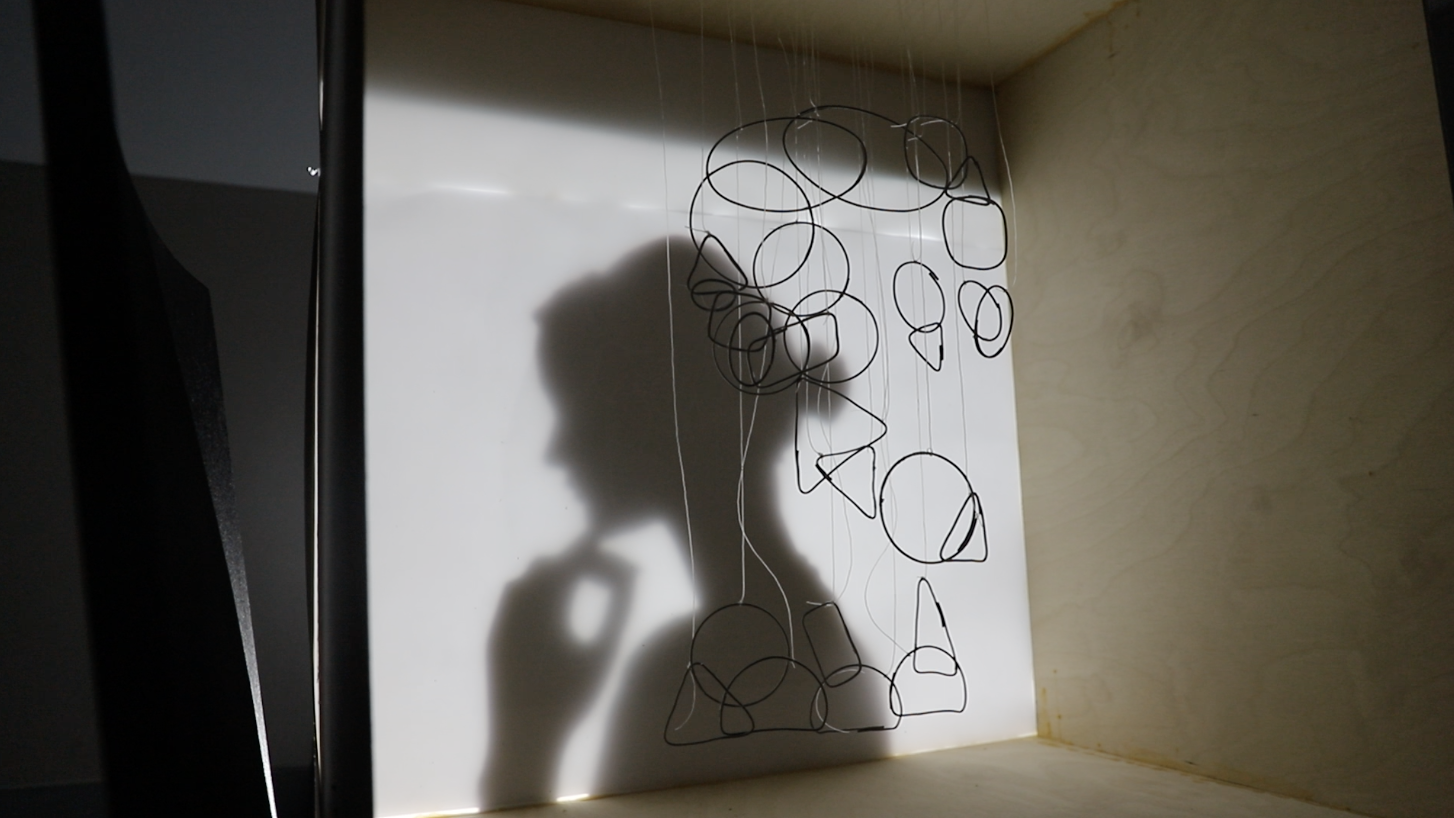
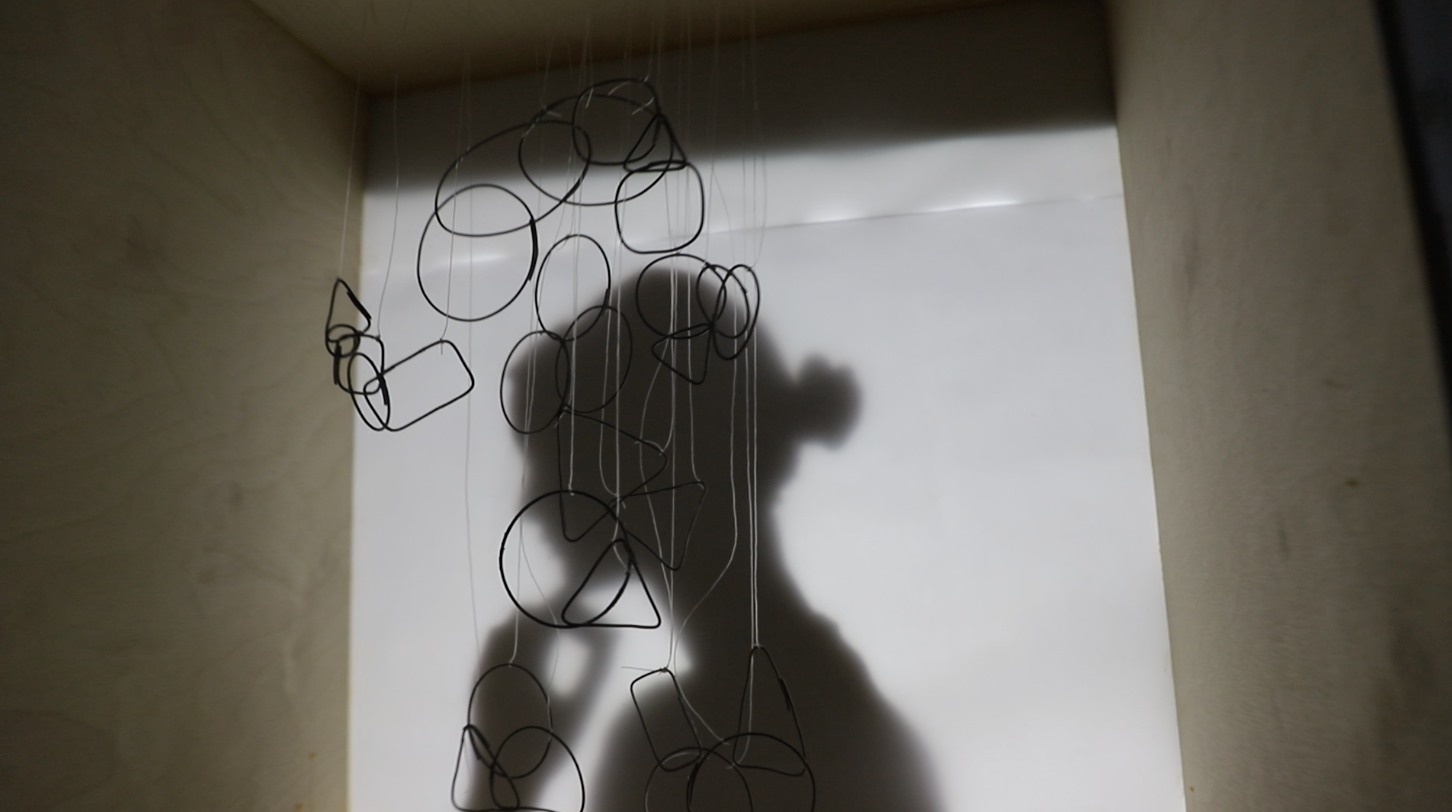
Views from different angles
The projection on the wall is a crisper version of the human contour that represents how the inner world is projected into the physical world. The viewers can see some little movement of the contemplating person. The movement corresponds to the natural movement of the steel wires in the front while hanging to the box's ceiling. The projection is generated separately from the physical installation. Some viewers read the background projection as the shadow of the installation, but the background moving image is projected independently. They can see the difference between the two structures but still correlate them together. It's a poetic visualization of how meanings are condensed and reduced in the process of translation. It paints a broader picture that looks at the translation process as a whole.
Final Presentation Video DocumentationFeebacks
This project is very open-ended. It opens up all kinds of interpretations by showing the contrast and correlation between two structures. The feedback from the viewers is diverse. Some of them can see the projection and the installation as two separate structures and generate interpretations about their correlation. For example, a person reflected in this work makes them think of human existence in 3D and 2D spaces. The installation is how we exist in the physical world, and the projection is like our profile pictures and personal images on social media. Some viewers thought the projection was the natural shadow of the installation and viewed it as an intricate light and shadow effect. These interpretations are not directly linked to the inner monologue but equally interesting as they correlate materiality and virtual space. Initially I wanted to make the project more close-ended. Therefore, I stick the QR code on the wood pieces, and put them beside the installation.
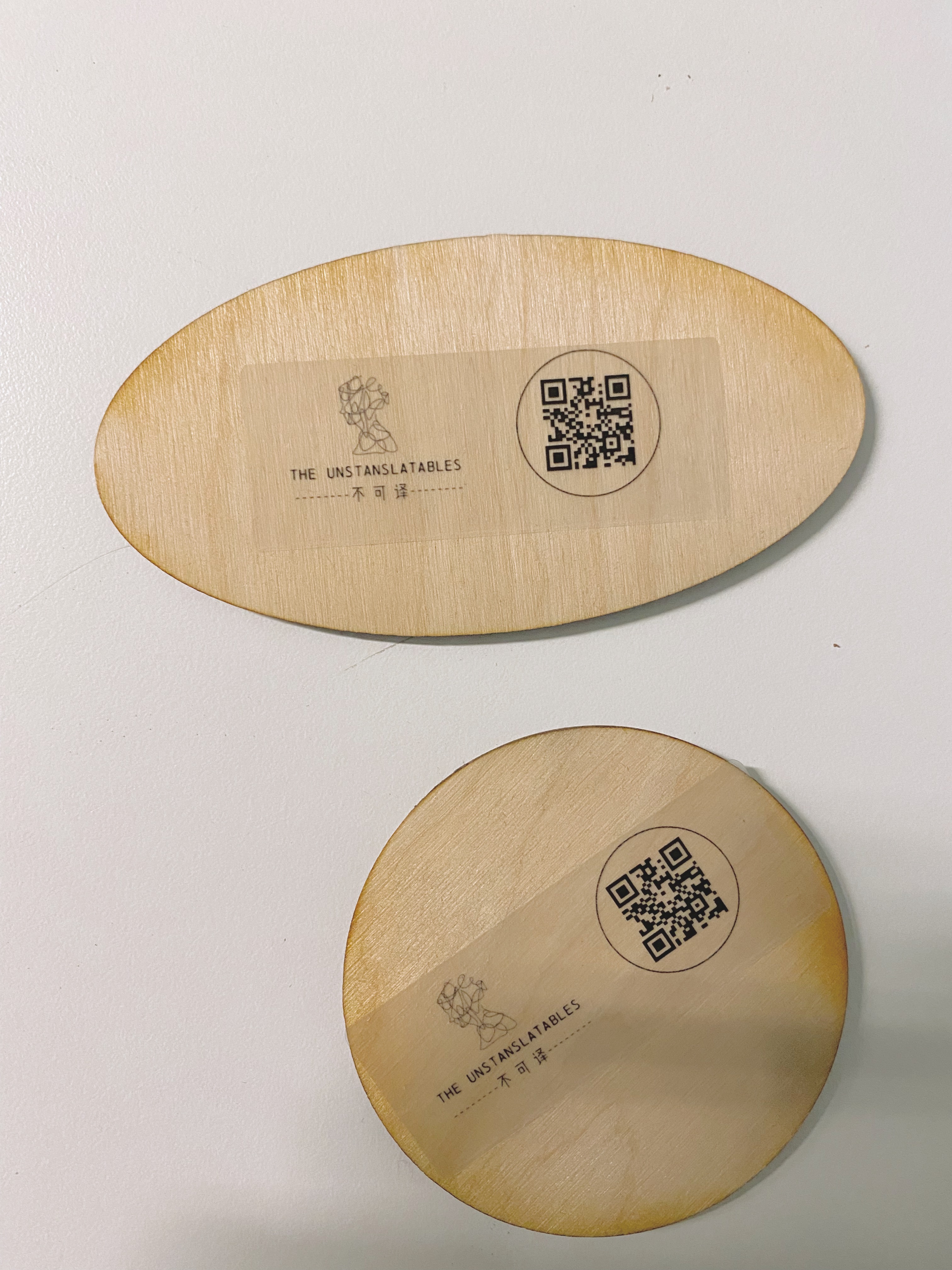
If the viewers scan it, they will see my concept video. But after hearing the different interpretations from the viewers, I decided to get rid of the concept video, and leave the project in its current shape. The 3D rendering shows the installation in a room-scale, which is the ultimate form of this work. As the viewers walk around this room, they will get a different view of the installation.
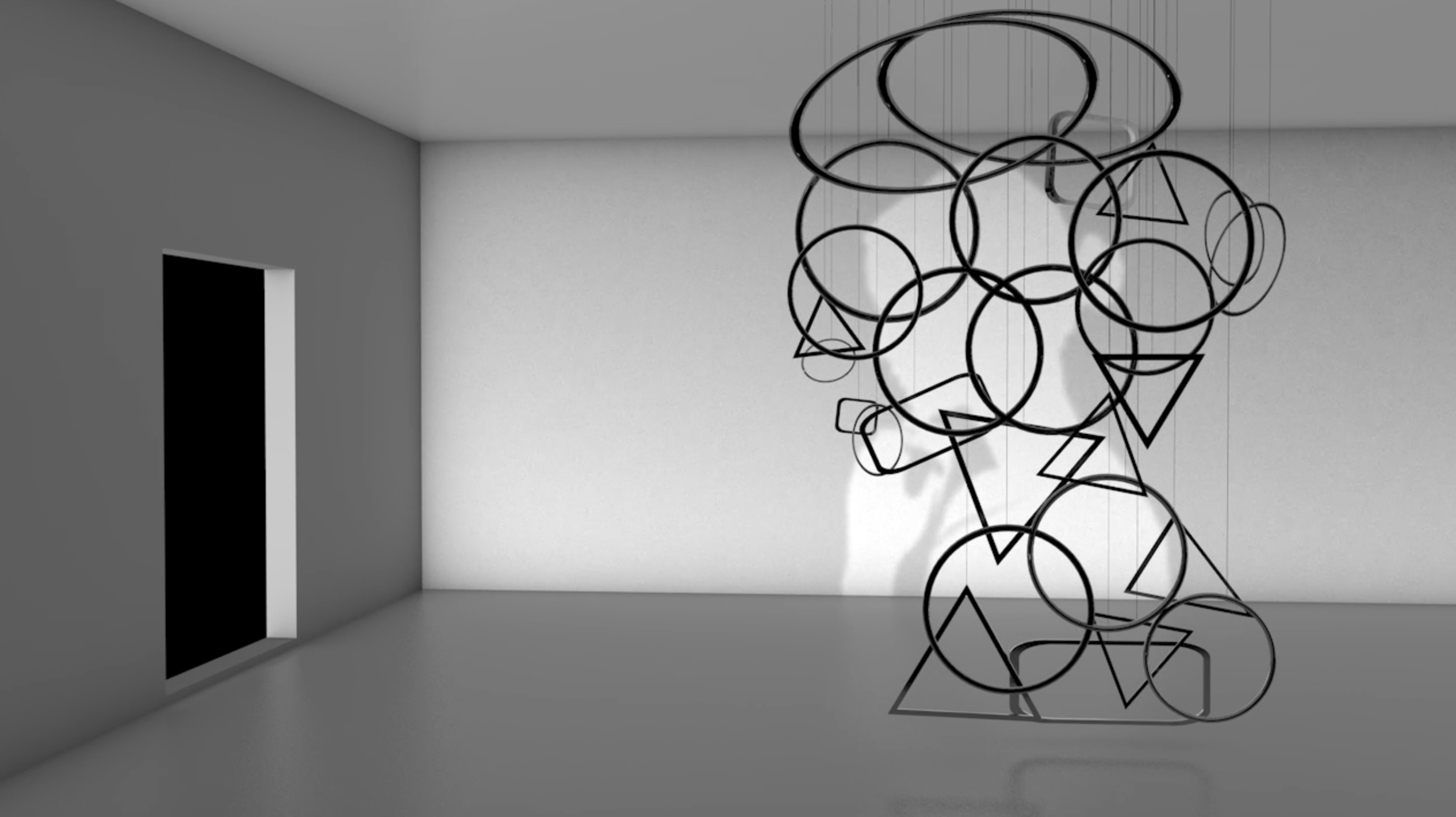
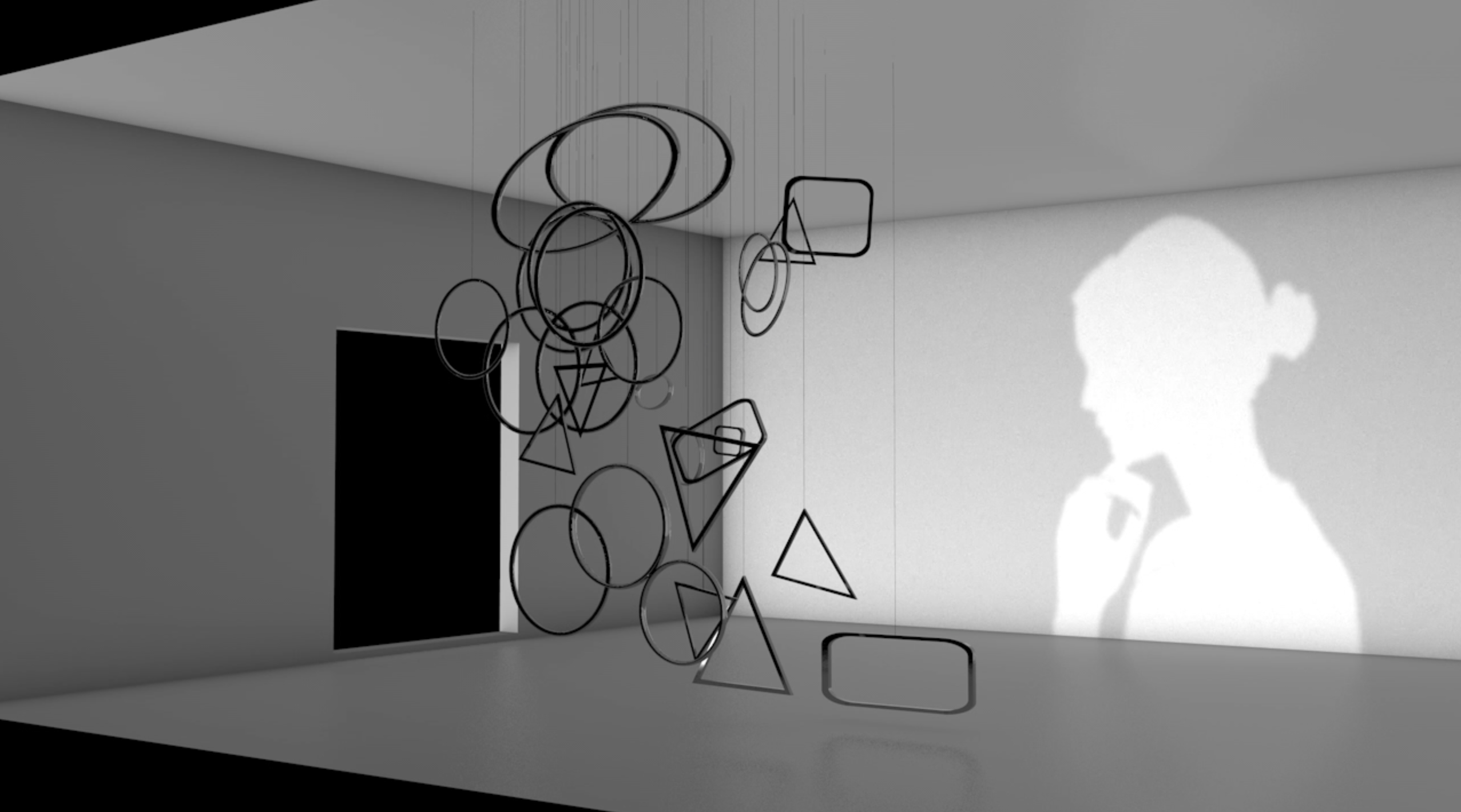

Future Iterations
While this project explores inner monologue in an artistic approach, there are some remaining questions in the design aspect that I would like to explore more in the future. The first one is to facilitate unspoken mutual understanding through design. There's a related idiom called "Ishin-Kenshin" in East Asia that denotes a form of interpersonal communication through unspoken mutual understanding, as known as the "heart to heart communication". It translates into English into terms like "sympathy" and "telepathy". Since translation is a reductive process, I wonder whether there's the possibility that we could translate people's inner thinking without the usage of language. One related project is called "Ishin-Den-Shin" by Disney research hub. They created a microphone that let a person record an audio message and then transmit it silently through his body and reproduce it with the physical touch. This experiment amplifies the mic input and sends it back as a high voltage, low current signal that turns the human body into the electrostatic audio source that can't be heard over the air. When his finger touches the recipient's ear, the recipient will listen to the private message without the need for verbal communication.
I found it's hard for the viewers to associate the front installation with the projection at the back because I failed to execute the shape and position of the steel wire precisely. I learnt I need to focus on the visual execution for the final output.